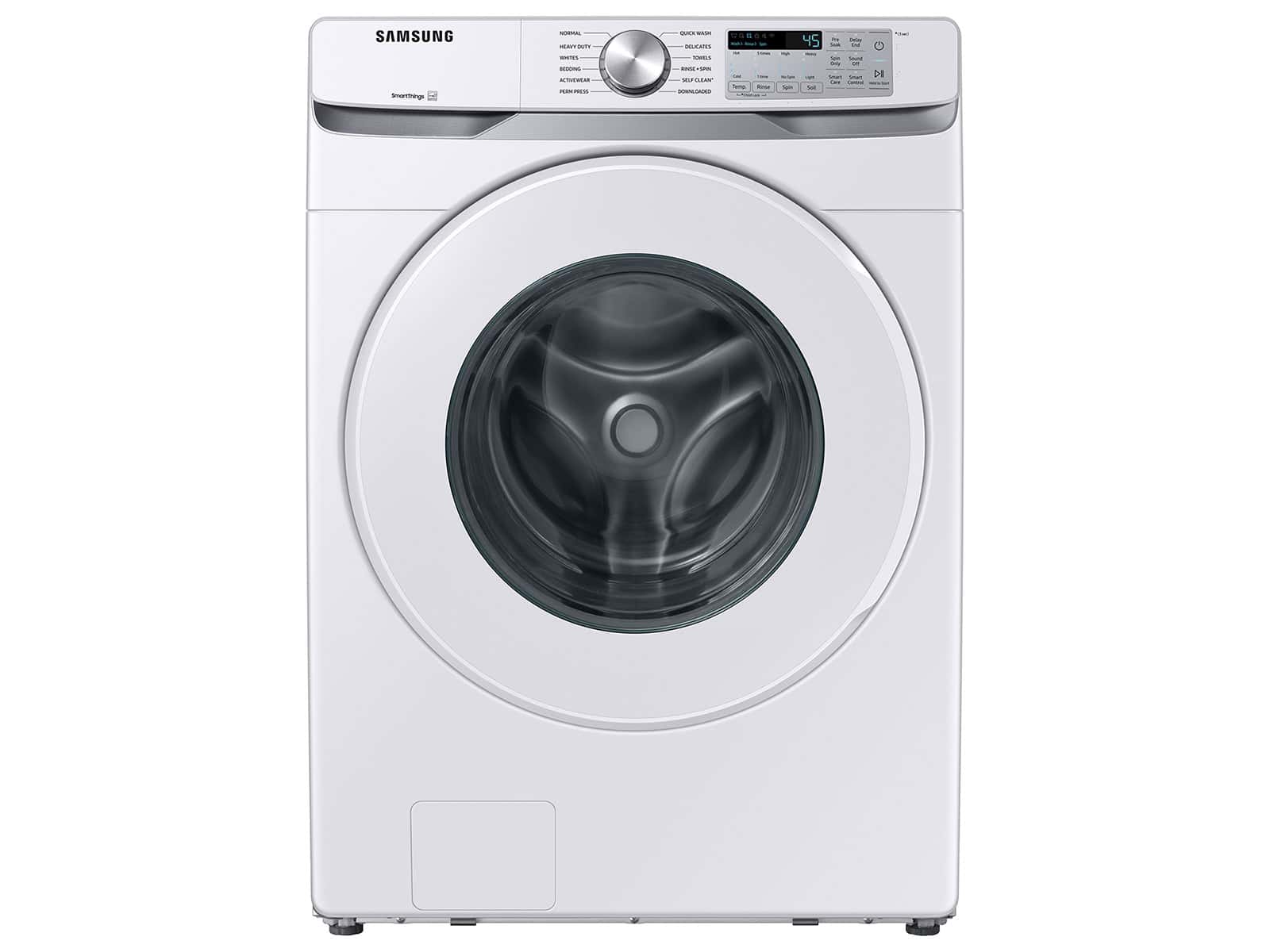If you own a Samsung washer, you might have seen the “SUD” error code, which means there’s too much soap suds in the washer. This can disrupt the washing and even damage the machine. But don’t worry! You can usually fix the SUD error by following some simple steps. By being careful with how much detergent you use, doing regular maintenance, and loading the washer correctly, you can prevent excess suds and keep your machine running smoothly. Remember, taking a little care of your washer can go a long way in maintaining its performance and lifespan. Understanding what causes the SUD code is essential for solving the problem and avoiding future interruptions during laundry. It’s not just about using less soap – there are several things that can trigger this error, from the type of soap you use to how you maintain the machine.
This guide will help you understand the error, take immediate action, troubleshoot the problem, and learn how to prevent it in the future.

Samsung Washer SUD Error Code: Troubleshooting Tips and Solutions
Understanding the SUD Error
The SUD error on your Samsung washer means it has detected excessive suds. This usually happens due to using too much detergent or the wrong type of detergent. High-efficiency (HE) detergents are designed for front-load washers and produce fewer suds.
Immediate Actions
If your washer displays the SUD code, it will typically pause the cycle to allow the suds to dissipate. You can try adding a capful of fabric softener to help break down the suds. If the error persists, you may need to take further action.
Troubleshooting Steps
- Power off the washer: Unplug the washer from the power outlet or turn off the circuit breaker. Wait a few minutes and then restart the washer. This may help reset the system and clear the error.
- Check the detergent: Make sure you’re using the correct type and amount of detergent. HE detergents are recommended for front-load washers. Refer to the detergent packaging and your washer’s manual for proper dosage instructions.
- Inspect the drain hose: Ensure the drain hose is not kinked or clogged. A blocked drain hose can prevent water from draining properly, leading to excessive suds. Straighten the hose and remove any obstructions.
- Clean the drain pump filter: The drain pump filter can accumulate debris, lint, and detergent residue. Clean the filter regularly to prevent clogs. Refer to your washer’s manual for instructions on accessing and cleaning the filter.
Additional Tips
- Run a rinse cycle: After clearing the error, run a rinse cycle with no detergent to remove any remaining suds from the washer.
- Avoid overloading: Overloading the washer can also contribute to sudsing issues. Follow the recommended load size guidelines in your washer’s manual.
- Use the correct water temperature: Hot water helps dissolve detergent more effectively and reduces suds. Consider using warm or hot water for heavily soiled loads.
Important Note: If the SUD error persists after trying these troubleshooting steps, it may indicate a more serious issue with your washer. Contact Samsung customer support or a qualified appliance repair technician for further assistance.
What is the Samsung Washer SUD Code?
When a Samsung washer flashes the SUD code, it’s telling you there’s a problem. But what does this really mean? It’s all about soap suds. Too many of them inside the machine. This code is the washer’s way of saying, “Help! I’m overwhelmed with bubbles!”

The main thing to know is too much laundry detergent often causes this issue. Yet, it’s not always just about the detergent. Other factors contribute too. Surprisingly, high-efficiency (HE) washers need less soap. Using regular detergent or too much of the HE variety could trigger the SUD notification.
What happens when the SUD code appears? First, the washer senses the excess suds. Then, it tries to fix the situation by adding more water to dilute and remove the suds. This process can extend the wash cycle, delaying when your laundry is done.
Remember, the SUD code is a precaution, not an error that means something is broken. It’s the washer’s way of avoiding a bigger issue, like a leak or motor damage. By understanding what causes the SUD code, you can take steps to prevent it and ensure your laundry day runs smoothly.
Adjusting your detergent use is a key move. But also consider the type of detergent you’re using and how you’re loading the washer. These actions can minimize the risk of seeing the SUD code light up your washer’s display again.
Why Does the Samsung Washer Display the SUD Code?
When a Samsung washer shows the SUD code, it’s telling you there’s too much soap. This might seem like a small issue, but it’s important. Too much soap can make the washer work harder than it should. The machine notices extra suds and tries to fix the problem by adding more water. This process makes the wash cycle take longer.
Several reasons can lead to the SUD code popping up. One common reason is using more detergent than needed. People often think more soap means cleaner clothes. That’s not true for washing machines. Another reason is using non-HE (high efficiency) detergent in an HE washer. HE washers need less soap because they use less water. Non-HE detergents create too much foam, which causes problems.
Samsung washers have sensors that spot when there’s too much foam. These sensors are part of the machine’s design to prevent damage. If the washer can’t get rid of the extra suds, it might stop and show the SUD code. This is the washer’s way of asking for help.
The type of clothes and how they’re loaded can also play a role. Bulky items or washing a big load can trap suds inside the drum. It’s like when bubbles get trapped under a bath mat. They don’t have anywhere to go. Washing a mix of large and small items helps water and soap move freely. This helps prevent too many suds.
Understanding why a Samsung washer displays the SUD code is crucial. It’s not just about the soap. It’s about how the washer works and how to use it right. This knowledge can help keep the machine running smoothly and make laundry less of a headache.
Common Triggers for the SUD Code
When a Samsung washer flashes the SUD code, it’s not just making a fuss over nothing. This signal is a cry for help, pointing to specific issues needing attention. Understanding these triggers can make laundry day smoother.
The first big problem is too much detergent. It sounds simple but it’s a frequent misstep. Washers are designed to use a certain amount of soap. Exceeding that creates a foam party the washer didn’t sign up for. Foam isn’t just bubbles; it’s a barricade that stops the washer from cleaning effectively.
Another trigger is the wrong type of detergent. High-efficiency (HE) washers need HE detergent. It’s not a marketing gimmick. HE detergents are less sudsy but just as effective. Using regular detergent in an HE washer is like putting diesel fuel in a gasoline engine. It won’t end well.
Load size and type also play roles. Bulky items or packing the washer too full can trap detergent within the load. This means soap gets caught in the fabrics instead of dissolving in the water. It’s like trying to take a bath with your clothes on; it doesn’t work as well.
Finally, there’s water temperature. Hot water makes more suds than cold. Sometimes, switching to a colder setting can cut down on foam.
Identifying these triggers is essential for preventing the SUD code. It’s not just about fixing a problem. It’s about understanding your appliance and using it the way it was meant to be used. This knowledge ensures laundry day is less of a chore and more of a breeze.
How to Resolve the Samsung Washer SUD Code
Fixing a Samsung washer displaying the SUD code isn’t as tricky as it might seem. Here are straightforward steps to get your washer back in shape.
First off, pause the washing cycle and give the suds time to dissolve. Often, waiting 20 to 30 minutes allows the machine to self-correct the issue. If the code remains, moving on to the next step is key.
Next, check the detergent you’re using. High-efficiency (HE) washers need low-sudsing, HE-compatible detergents. If you’ve used too much detergent or a non-HE type, it’s time to switch. Reduce the amount to meet the manufacturer’s recommendations and switch to an HE detergent if you haven’t already.
Another step involves running a cleaning cycle. Without adding any clothes or detergent, set your washer to its cleaning mode. This helps remove any detergent residue and clear out the suds sensor. If your washer doesn’t have a self-clean cycle, run a regular cycle with hot water.
Also, inspect the drain pump filter. A clogged filter can prevent proper drainage, contributing to the SUD code. Most Samsung washers have an access panel at the front. Once you locate the filter, clean it out thoroughly, remove any debris, and check for blockages.
Lastly, monitor your washer’s load size. Overloading the machine can restrict movement and cause excessive suds. On the flip side, underloading may lead to an imbalance in water and detergent, also triggering the SUD code. Finding the right balance is essential.
By following these steps, you can tackle the root causes of the SUD code. From selecting the correct detergent to maintaining proper load sizes, these actions help keep your Samsung washer running efficiently.
Tips for Preventing the SUD Code
To keep a Samsung washer running smoothly and avoid the dreaded SUD code, there are several straightforward strategies one can employ. Each method tackles different aspects of washing machine use and maintenance to prevent excessive suds formation.
Firstly, it’s crucial to use the right type of detergent. Samsung washers are high-efficiency (HE) machines needing HE detergent. These detergents are specially formulated to produce fewer suds, which is perfect for these types of washers. Always check the detergent’s packaging to make sure it’s compatible.
Second, measuring detergent accurately is key. Too much detergent doesn’t just lead to suds; it can also leave residues on clothes and the washer. Following the recommended detergent amount based on the load size helps mitigate suds build-up. If one’s dealing with very soft water or a smaller load, cutting back on the detergent amount even further can be beneficial.
Cleaning the washer regularly is another effective strategy. Monthly cleanings with a washer cleaner or a bleach-water solution can remove leftover detergent and fabric softener that may contribute to suds formation. Paying attention to the washer’s drum and the gasket around the door is especially important during these cleanings.
Lastly, ensure the washing machine is not overloaded. An overloaded washer can’t properly mix water and detergent, leading to poor washing results and potentially triggering the SUD code. Washing large items like bedding separately and avoiding stuffing the machine to the brim can prevent this issue.
By incorporating these tips into regular laundry routines, users can significantly reduce the likelihood of encountering the SUD code. This ensures the washer operates efficiently, prolonging its life and ensuring clothes come out clean and fresh every time.
Frequently Asked Questions
What does the SUD Code mean on a Samsung Washer?
The SUD Code on a Samsung Washer indicates the machine has detected excessive suds due to overuse of detergent or incorrect detergent type. This prevents efficient washing and rinsing of laundry.
How can I resolve the Samsung Washer SUD Code issue?
To resolve the SUD Code, you can pause the wash cycle, check and adjust detergent usage, run a washer cleaning cycle, and ensure you’re not overloading the machine. This helps in reducing suds formation.
Can the wrong detergent cause the SUD Code to appear?
Yes, using non-HE (High Efficiency) detergents or too much detergent can cause excessive suds, leading to the SUD Code appearing on your Samsung Washer.
How often should I clean my Samsung Washer to avoid the SUD Code?
It’s recommended to clean your Samsung Washer once a month to prevent issues like the SUD Code. Regular cleaning helps maintain the washer’s efficiency and longevity.
Is overloading the machine a reason for getting the SUD Code?
Absolutely, overloading the Samsung Washer can impede water circulation and detergent’s ability to dissolve correctly, contributing to the appearance of the SUD Code. It’s important to follow the recommended load size.







